

Windows 8 is designed for touch screens and is meant to provide a common interface across all devices. This is great, but if you spend your time on a computer using programs on the Windows 8 Desktop and not using Windows 8 Apps I have a recommendation for you: Until Microsoft gives you the option to have a Start menu much like in Windows XP, Vista, and 7 install the Classic Start Button.
[As of November, 2014 the latest version is 4.1.0, you can see your current version at
the top of the dialog box by right-clicking on the Start button anc choosing Settings]
Here's a free program you can download and get back the features of the Windows 7 start button plus some new ones:
Just click on the Download Now button, this site isn't too bad, but many sites have ads that are easy to click on by mistake and end up installing malware you don't want.
When you install this, I strongly recommend ONLY installing the Classic Shell, not the other things that come with it. To do this use the little pull-downs and turn off the installation of Classic Explorer, Classic IE9, and the CS Update. Before you click on Next, the setup window should look like this:
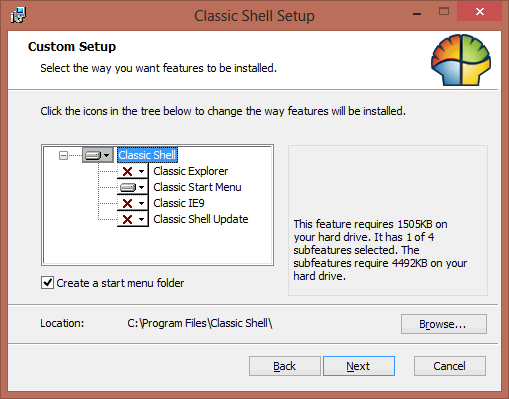
The defaults of the latest versions of Classic Shell work much better with Windows 8 than they did a couple years ago. I do recommend a few changes, shown below. These settings menus are shown when you install Classic Shell, or can be accessed later by right-clicking on the Start button and choosing Settings:
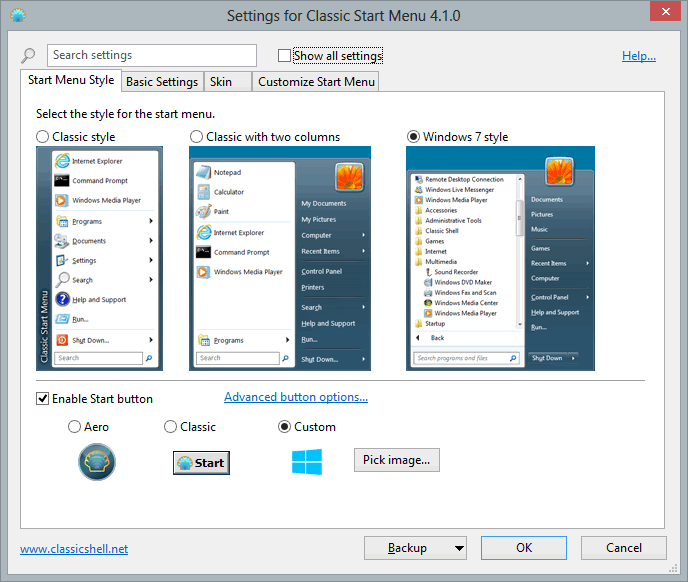
On this first screen (above) I like to choose the Windows 7 Style. I have also picked a "Custom" button, if you're in that interested e-mail me. Also note that at the top there is a little box where you can choose "Show all settings". If you check that, many more tabs worth of options appear:
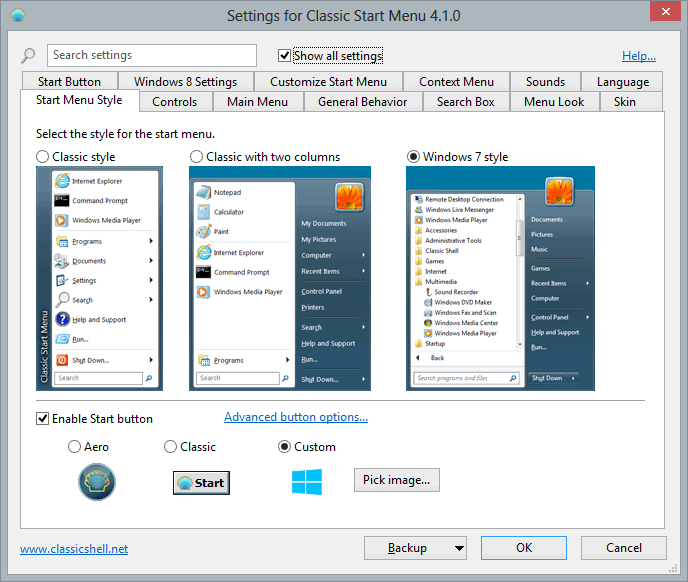
You may choose not to change any, but the ones I change are shown below, either in bold type, or highlighted:
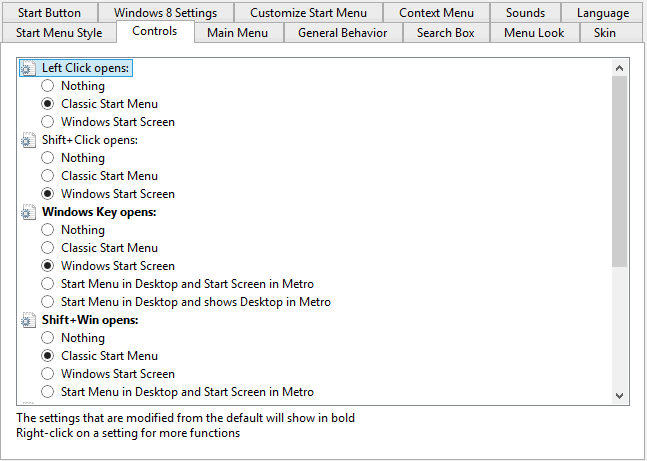
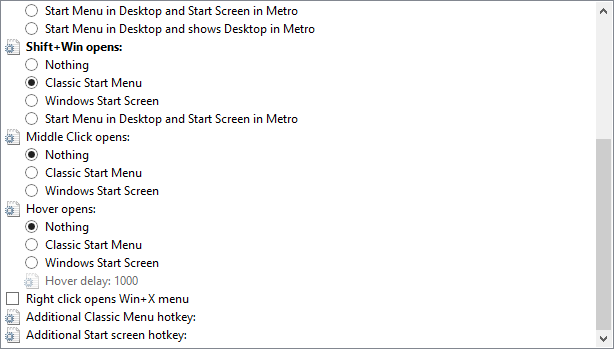


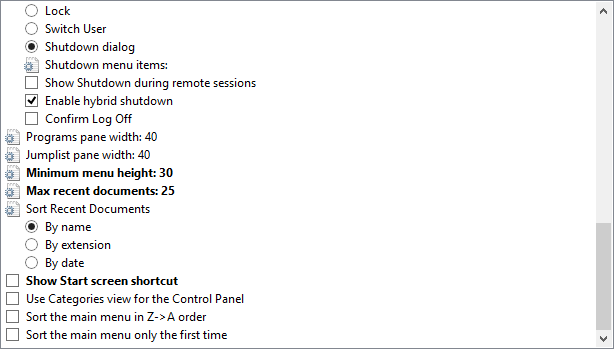
On the Main Menu tab (the three screen shots above) I like the Windows Key to open the Windows Start Screen and Shift+Win to open the Classic Start Menu. On this same tab decide if you want the every changing list of programs in the left column to show Recent Programs, or the default of Frequent Programs. (I've gone back to frequent, but you need to decide for yourself.) I also like the Shutdown button to display the shutdown dialog, which prevents turning off the machine by accident with a single click.
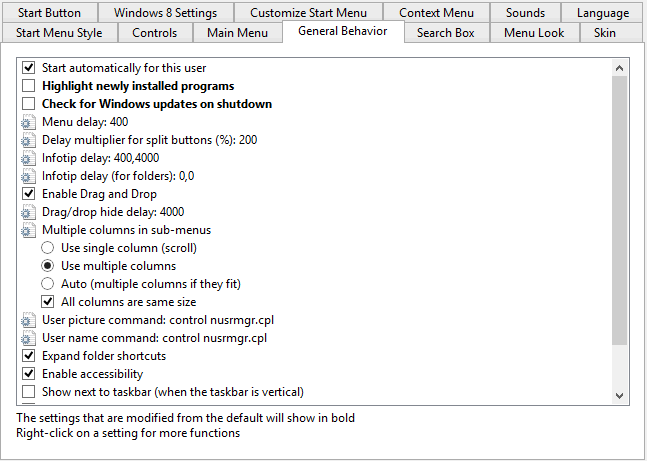
I like to turn off "Highlight newly installed programs" (above) by un-checking it. Since I want to control when Windows does it's updates I turn off Windows Updates and, therefore, don't want to bother checking for Windows Updates upon shutdown.
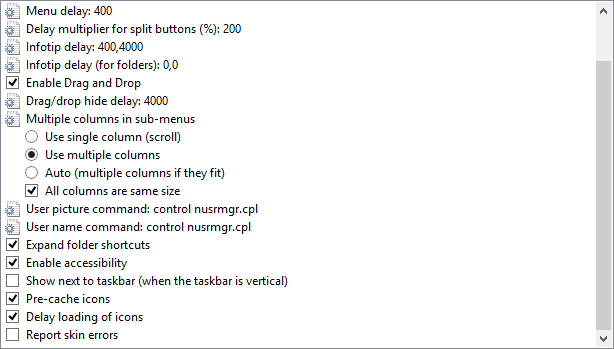
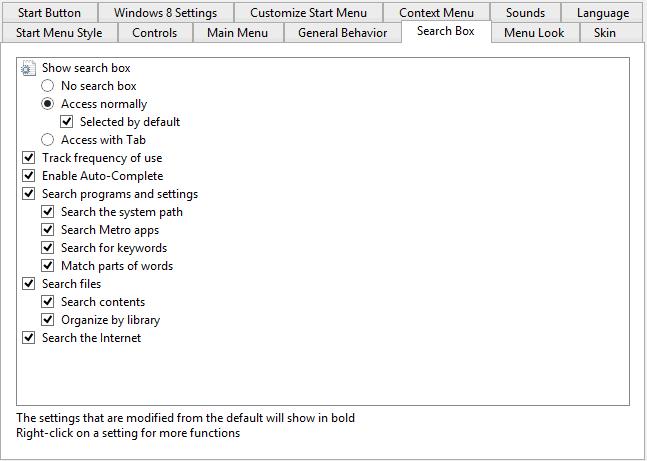
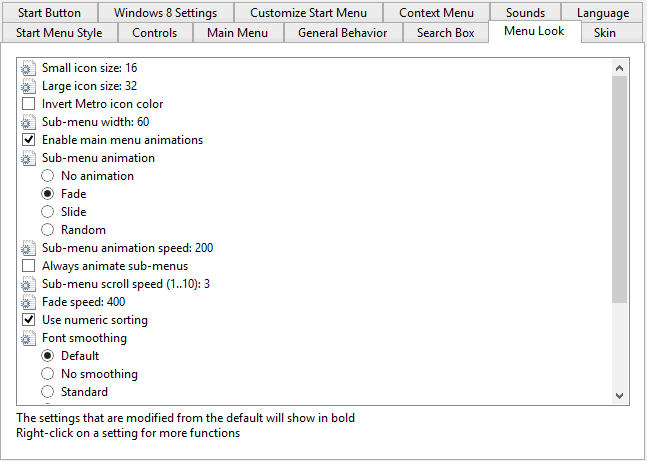
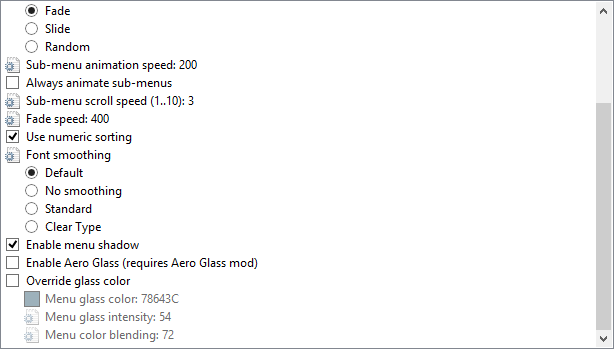
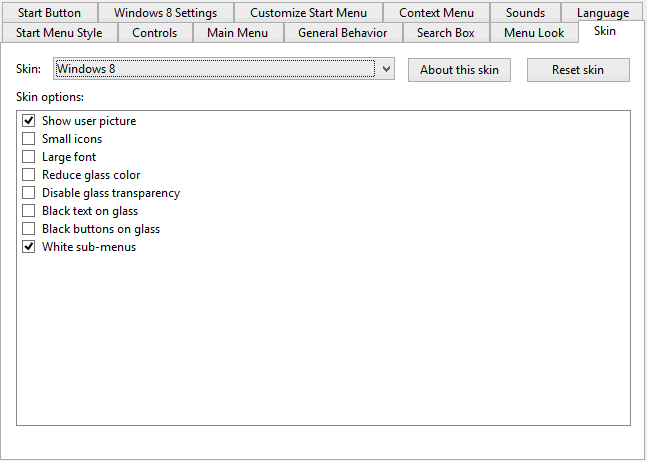
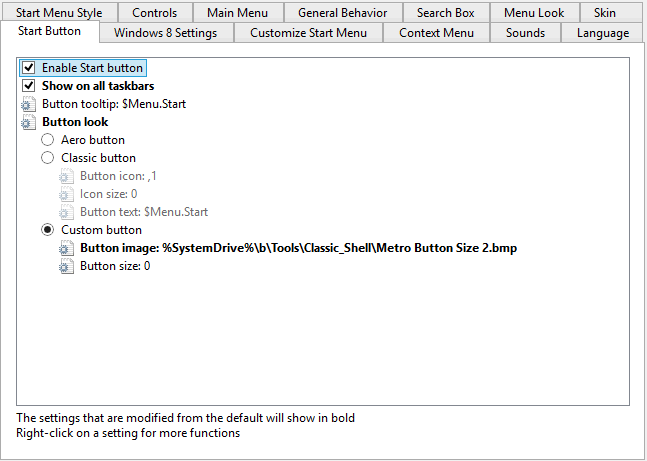
If you have multiple monitors you might want the task bar on all of them (above). If you mostly use the desktop you might want to disable the active corners (below). With multiple monitors you might not want to disable the corner with the Win 8 Start Button because it determines which monitor the Start Screen appears on.
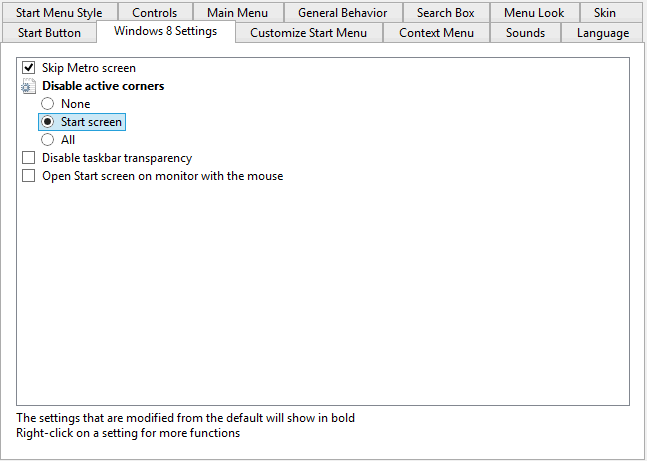

Before changing the way Control Panel works (below) on the Start Menu, check out the default behavior. You may like it better.
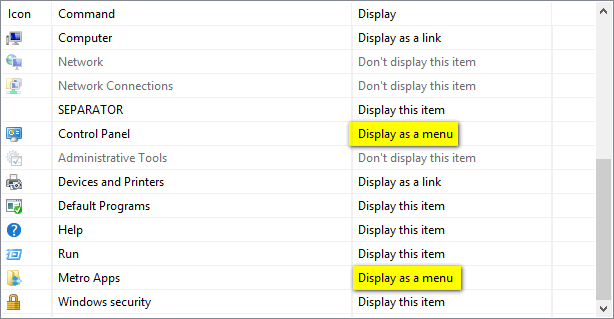
On the Customize Start Menu tab (above) I like to display the Control Panel as a link instead of as a menu (the default), but I'm having a hard time deciding, the default might be better. If you use any Windows 8 Apps I recommend you change Metro Apps to behave like the default of the Control Panel.
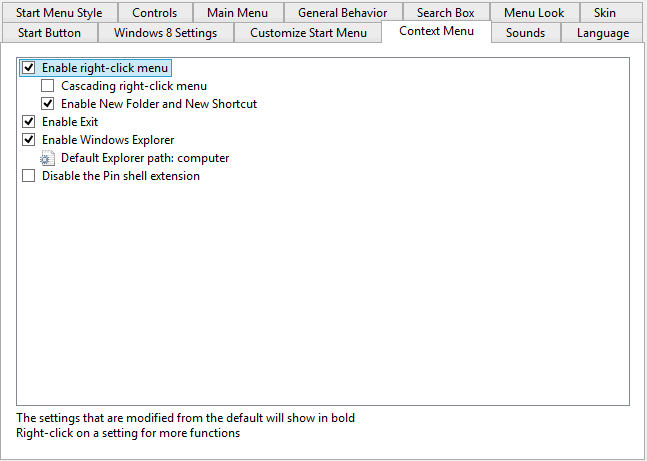
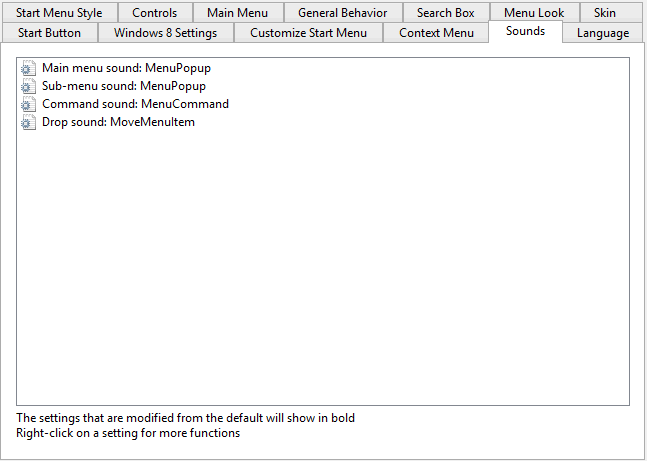
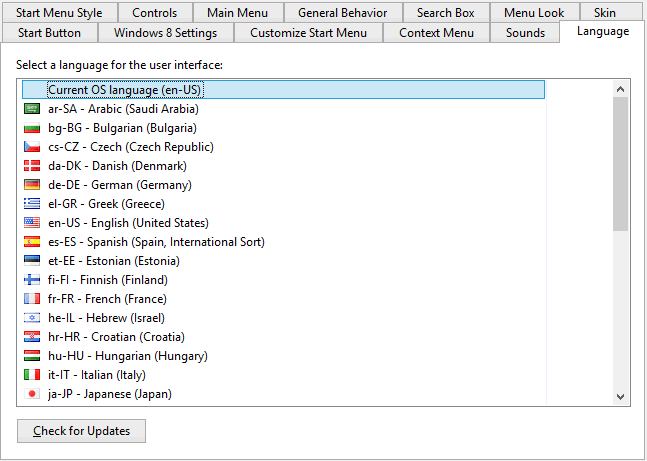
As you can see above, there are well over a hundred options you can change. That's why I like this add-on so much ... you can customize it to work exactly the way YOU want it to work.
On the various settings tabs for the Classic Start Button you can control what appears on the menu and how it appears. You'll also notice certain items in both columns have little arrows indicating fly outs. For the programs these allow direct access to recently used files (the same as jumplists that appear when you right-click on icons on the Taskbar. Here's an example of what the flyout looks like for the NoteTab program:
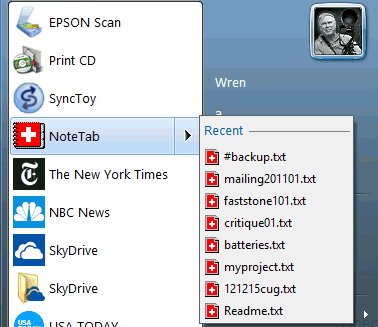
If you get a new Windows 8.1 machine, be sure and install all the updates. A BIG one (almost a GB which takes a long time to download and install) came out about the first of April, 2014. It has some very nice improvements, including showing Apps that are running on the Taskbar and letting you close the Apps by right-clicking on the taskbar icon.
One thing to beware of: the Classic Shell may prevent this update from installing. Easily solved by right-clicking on the Start button and choosing Exit before doing the update. It will start automatically when the system reboots.
Be sure to pin programs or Apps you use frequently to one or more of these:
It's really easy to do from the desktop world, right-click on any program shortcut or name on the start menu and among the options listed you'll see the three choices Pin to Start Menu (Classic), Start, and Taskbar
Tip: Be sure the first nine programs pinned to the Taskbar are the same on all your machines. Both Windows 7 and Windows 8 machines. This will allow to use the same WinKey+# shortcuts on both. See Windows 8 Shortcuts. For example, my Taskbar currently looks like:
![]()
If I press 7 while holding down the WinKey it starts the Calculator I use. This is because, not counting the (Classic Shell) Start Button the Calculator is the 7th program (counting from the left) pinned to the Taskbar.
Speaking of the Taskbar, I usually prefer to open File Explorer (aks Windows Explorer) with the "Computer" view instead of the Library view. You can do this with the WinKey+E shortcut, but I also like having a shortcut on my Taskbar that does this. Download this Computer Shortcut in a ZIP file, put it somewhere and then unzip the shortcut on your desktop; then pin it to the Taskbar. On my Taskbar (above) it's the icon between the one that looks like a folder (File Explorer, Library View) and one with a triangle in an orange circle (Media Player). You'll never see it highlighted (showing it's running), instead each time you press it you'll see the folder (File Explorer) icon highlighted again.
In Windows 8 when you delete all the files and/or folders currently selected it no longer asks you if you're sure you really want to do that. While many think this is an improvement, personally I find it too easy to hit the Delete key by mistake and like the confirmation. If you want to turn the confirmation back on, right-click on the recycle bin and choose Properties. You'll see this dialog:
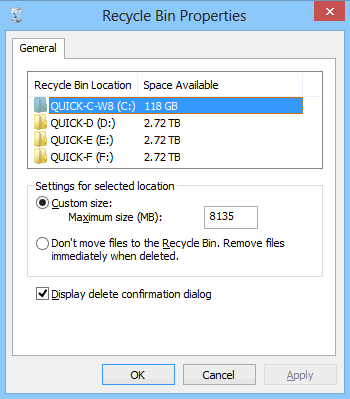
Check the box at the bottom to "Display delete confirmation dialog".
Suggested next choices: